By Nick Halls (resident of Ardentinny)
This is the first of a sequence of reports focused on access around Glen Finart in the Argyll Forest Park, which is part of the Loch Lomond and Trossachs National Park.
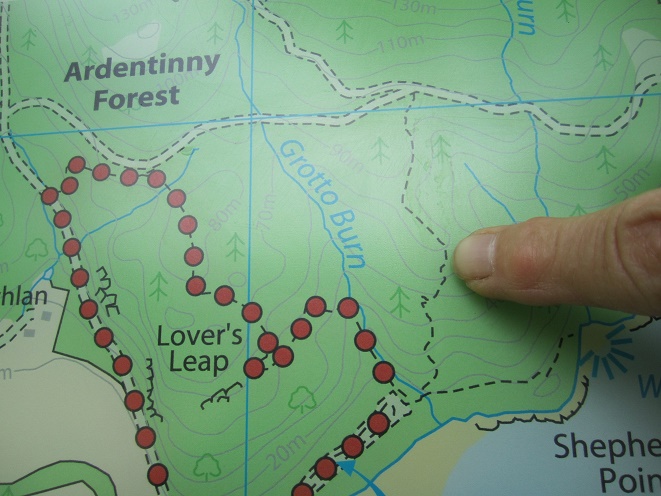
The path was a traditional route, and Right of Way, that has existed since at least the 1940’s, but possibly much longer.
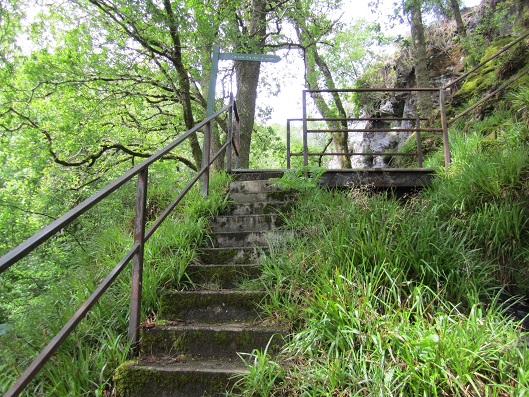
An indication of the permanence and investment in the route, possibly dating back to when the bay was a camp used for training Beach Commandos, and subsequently by Forestry Workers recruited from the unemployed of Glasgow.
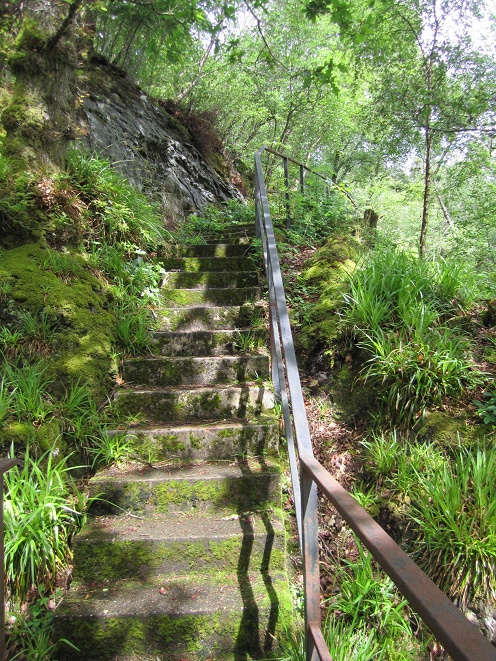
This can hardly be regarded as a dispensible‘desire line’ that does not need to be preserved if it causes inconvenience to felling operations.
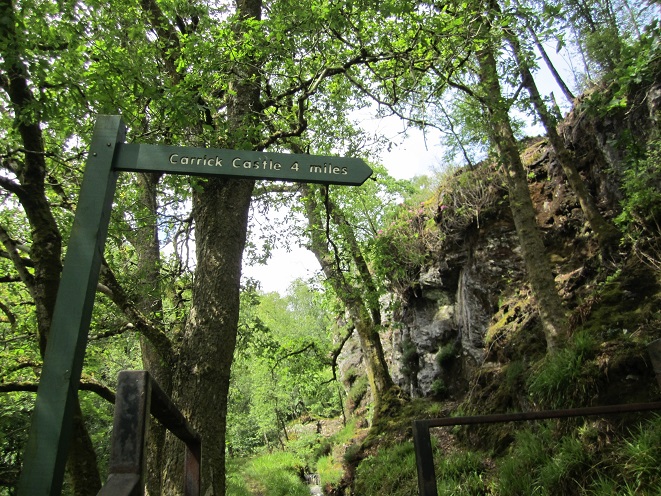
The track is signposted, part of the core path network, and is the route from the bay carpark to Loch Goil, following the shore of Loch Long. It joins two communities.
The pedestrian sections are scenic, and relatively non-strenuous. It is a popular and historically important ‘transhumance’ route, that used to connect farms and holdings, now disappeared due to forestry operations.
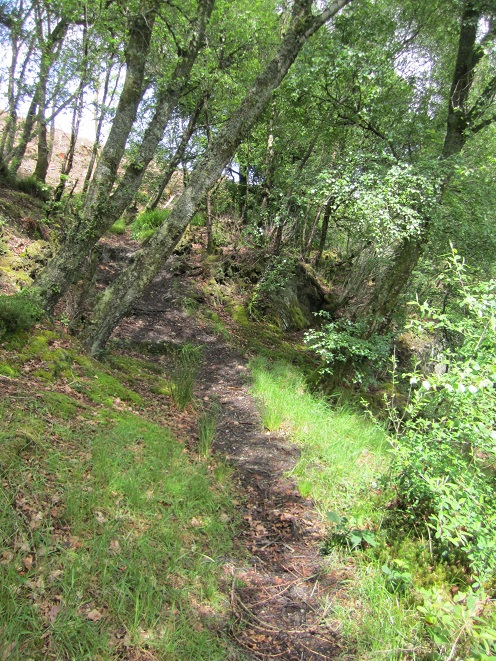 The path ascends through pleasant natural woodland, and is well established but not over engineered and badly aligned as is the current practice. It has the gradient of a route that was used for carrying goods and probably used by pack animals.
The path ascends through pleasant natural woodland, and is well established but not over engineered and badly aligned as is the current practice. It has the gradient of a route that was used for carrying goods and probably used by pack animals.
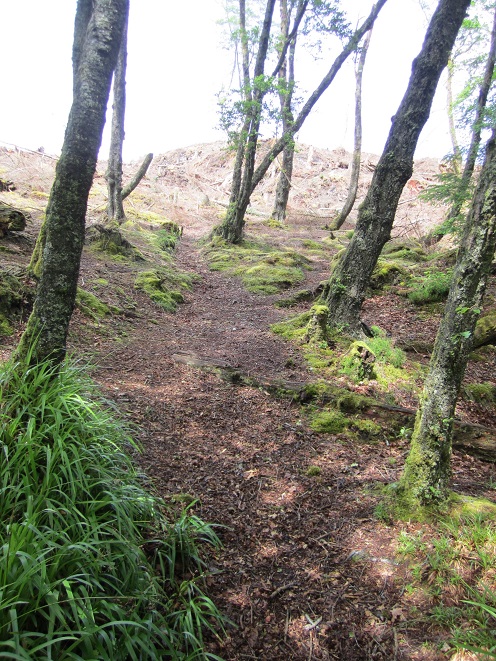
Then this! Despite years of use and in an area of heavy rain, with almost no maintenance, it shows almost no sign of erosion. The resilience of the path testifies to the poor understanding of those responsible for aligning and constructing recreational paths today.
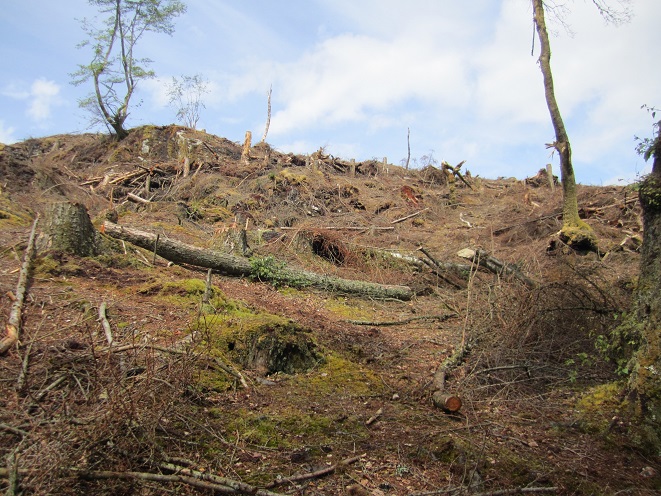
Leading to this. Over the years, I have cleared the path on a number of occasions of wind blow, minor obstructions arising from the growth of commercial forestry, and encroaching Rhododendron, but clearing this would be a monumental task.
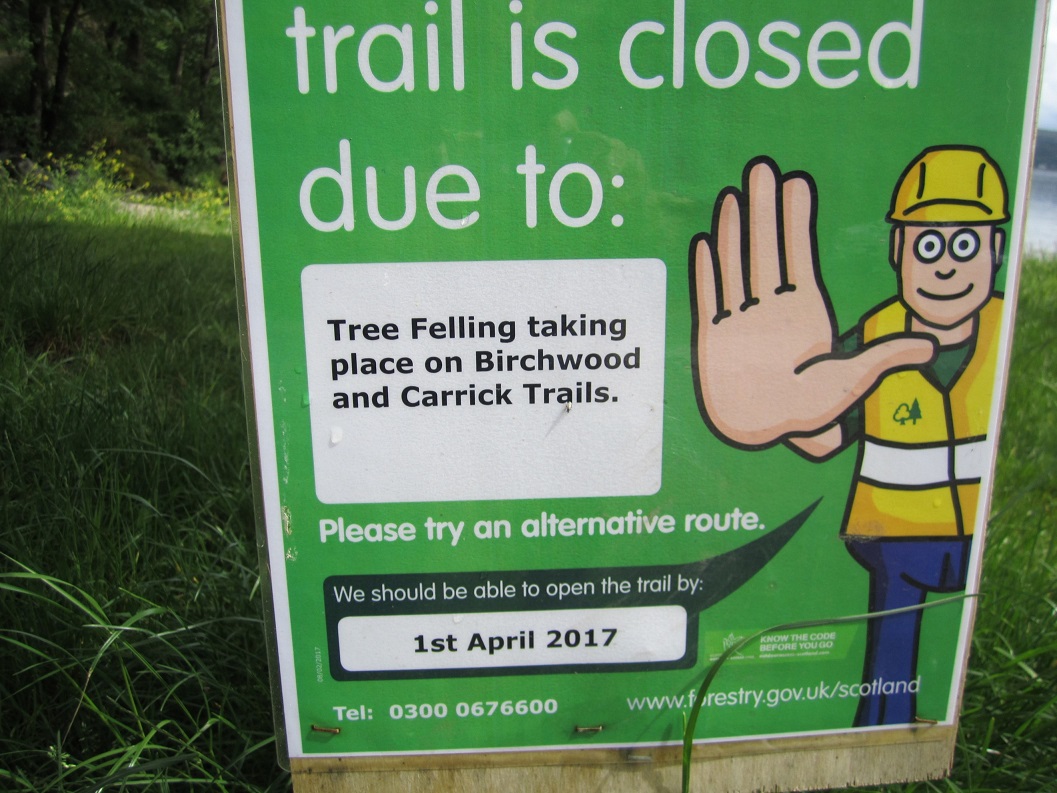
And, to add insult to injury, this!
Needless to remark nothing has been done to clear the path, presumably its open for access, but users will need to clear the route and re-establish a viable track, as if it were merely a ‘desire line’.
There is no indication that the path will be reinstated, just that access will be restored, if one can find one’s way.

The scenic impact of the clearfell, with the progressive degradation of the landscape quality by the patchwork of ‘industrial’ forestry operations, that will continue as the cycle progresses. Scenes like this are very unusual in other Western European National Parks.
The Loch Lomond and Trossachs National Park Authority, as Access Authority, at the very least needs to ensure Forestry Commission Scotland restores this path.

Can I check as to whether the writer has consulted with FCS over this issue. I am sure this felling would be within the forest design plan for the area which would also contain details of all recreation related activities. No one likes to see a clearfell site however that alone does not confirm that nothing will be done to repair damage to existing infrastructure.
Tim, a fair point about the policy and strategy context. The Cowal and District Forest Strategy which is available on FCS website says: “We will strive to maintain access to rights of way and core paths during forestry operations, and we will continue to work closely with local authority access officers and access forums to find practical solutions to maintaining public access or, where health and safety concerns prohibit this, provide alternative routes.” There is also FCS guidance on access https://www.forestry.gov.uk/pdf/FCPN104.pdf/$FILE/FCPN104.pdf which specifies among other things: (Managers) must also undertake forest operations in a way that takes account of access rights and minimises the time and area affected by any necessary restrictions (Figure 2). This is best achieved through the dynamic and flexible management of access during forest operations at sites when health and safety risks necessitate restricting access; Identifying any particularly heavily used or strategically important paths such as core paths or rights of way.; Following any operational damage to a core path or right of way, the legal requirement (see Section 23 of the Land Reform Act) is that the path should be reinstated within two weeks, unless alternative arrangements have been made with the access authority. Its difficult to see how that Guidance has been followed in this case and why, if alternative arrangements were made with the Access Authority, these weren’t advertised (on signs etc).
Thanks for it that Nick. Those commitments are made at a strategic level in the Strategic Plan however as you will be aware there will be a local forest design plan for this woodland which will detail the felling operations as well as conservation and recreation considerations. I just wondered if a conversation had been had with David Robertson prior to his retirement or Will Huckerby in his absence. The issues raised in the article are valid however I would think that including the views of FCS on this issue would make it more rounded. Thank for the repose. T